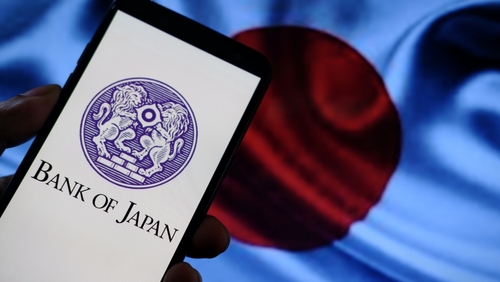

This article is only available to Macro Hive subscribers. Sign-up to receive world-class macro analysis with a daily curated newsletter, podcast, original content from award-winning researchers, cross market strategy, equity insights, trade ideas, crypto flow frameworks, academic paper summaries, explanation and analysis of market-moving events, community investor chat room, and more.
Summary
- The BoJ kept its policy rate unchanged as expected, reaffirming its July forecast.
- During his presser, Governor Ueda distanced himself from the previous ‘time to spare’ narrative, leaving the door open for a December rate hike.
- We watch for further yen weakness and subsequent BoJ speeches guiding towards a December rate hike.
Market Implications
- We think the BoJ will hike its policy rate in January.
Assessment of Economy Unchanged, Fog Clearing on Uncertainty
As expected, the BoJ kept rates unchanged at ‘around 0.25%’.
Minor adjustments were made to its forward-looking projections, with FY25 core CPI forecast trimmed to 1.9% (from 2.1%) citing lower oil prices, while FY25 GDP growth was marginally upgraded to 1.1% (from 1.0%). Despite the CPI downward revision, the BoJ maintains its view that price risks for FY25 remain skewed to the upside. We believe this reaffirming is a positive signal and shows the BoJ is increasingly confident in its outlook.
A new addition to the policy statement emphasized heightened attention to overseas economies, particularly the U.S., though this largely echoes BoJ officials’ previous communications. When pressed, Ueda expressed reduced concern about U.S. economic risks, though emphasised this would not automatically trigger policy changes.
Ueda’s presser revealed several shifts in tone. Most significantly, he distanced himself from his previous ‘time to spare’ narrative, leaving the door open for a December rate hike. Relatedly, while acknowledging the recent yen weakness, he highlighted the potential passthrough to higher prices. This shows FX moves remain a sensitive issue.
The recent Tokyo inflation data, showing broad-based price increases, was acknowledged but the BoJ awaits clarity from the upcoming Rengo wage negotiations. While last year’s wage negotiations were pivotal in ending the negative interest rate policy (NIRP), Ueda suggested wage gains alone would not drive the next policy move, though noted 3% base wage increases would be viewed positively.
Growth Remains Elusive, US Election Risks Await
The BoJ faces two opposing risks that could influence its policy path:
Domestic Demand Weakness
The persistent weakness in domestic demand presents a structural challenge to the BoJ’s outlook. Services consumption remains subdued, with households demonstrating a preference for saving rather than spending recent fiscal support measures, including the income and inhabitant tax credits. The industrial sector is showing concerning signals, with the latest flash manufacturing PMI highlighting weak new orders, particularly in the automotive sector. This weakness is further corroborated by September’s machine tool orders from domestic firms, which fell 9% YoY. These trends pose a significant challenge to the BoJ’s above-trend growth projections for the next 12-24 months, though it may be less of a concern in the near term while rates remain far below neutral.
Yen Weakness and Inflation Risk
On the other side, renewed yen depreciation has emerged as a more immediate concern, contributing to sustained elevated levels of goods and food inflation. This pressure could intensify, particularly given the potential for further yen weakness during a second Trump presidency, which might necessitate a more accelerated BoJ policy response.
How Will the BoJ Signal a December Rate Hike?
Following criticism over market surprises, particularly around the July rate decision, Governor Ueda has outlined a clearer communication roadmap during his recent IMF appearance. The strategy appears to be unfolding in two distinct phases:
Phase 1: Language Adjustment
The BoJ has already initiated the first step by moving away from the ‘time to spare’ rhetoric, signalling a potential rate hike on the horizon. This subtle but significant communication shift initiates market preparation.
Phase 2: Enhanced Communication
Acknowledging insufficient communication may have contributed to July’s market surprise, Ueda indicated the BoJ will take a more proactive approach. Market participants should closely monitor BoJ communications in November, following the election. Speakers are likely to emphasise two themes:
- Implications of November’s nationwide CPI data.
- Inflationary risks associated with yen weakness.
For now, we believe the BoJ will next hike in January but watch for signs of a shift in December.
